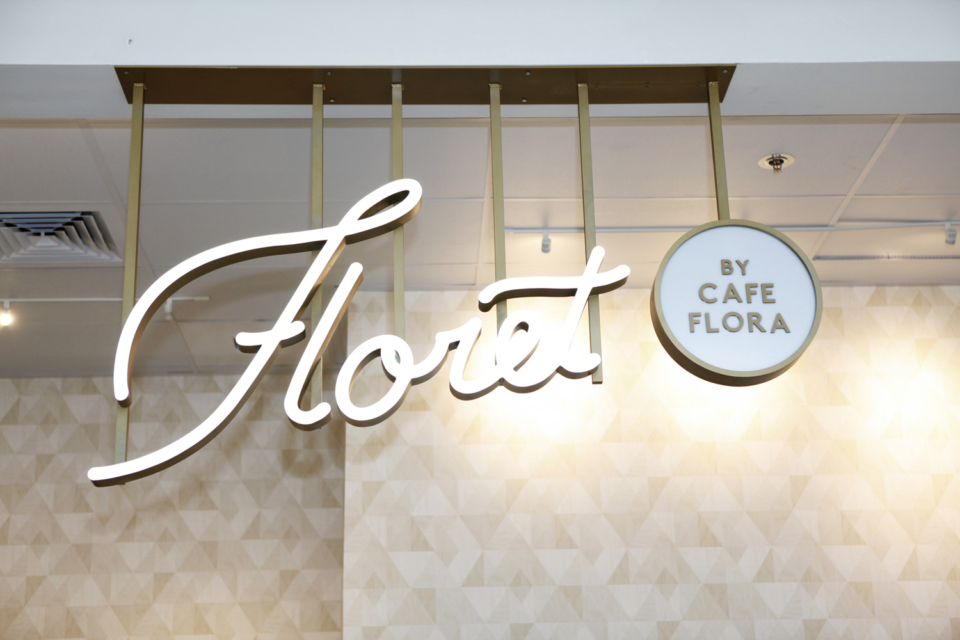
Amid much of the fanfare, its independent owner, Nat Stratton-Clarke, wasn’t hasty about putting a lot of thought into the restaurant’s first foray into an airport. Stratton-Clarke purchased the ownership of the 27-year-old Cafe Flora in 2008 and has served as the Chief mastermind behind all of its success over the past decade. Cafe Flora opened in 1990 in Seattle’s Madison Valley neighborhood, which is adjacent to Capitol Hill, Madrona, and Madison Park. The area has a thriving culinary scene, featuring several prominent French restaurants, and when Statton-Clarke took purchased Cafe Flora from its original owners back in 2008, he spruced up the joint to match the elegance of its surrounding area. He added a new bar area, refinished the floors, and transformed the restaurant to appear as more like a garden gathering space where food was also served.
In the same vein, Floret at SeaTac aims to fulfill the same mission by bringing al-fresco style dining to millions of passengers transiting through the busiest gateway airport in the Pacific Northwest. The Cafe Flora concept thrived under simple principles of using local and organic ingredients in the menu design, along with eco-friendly touches to the interior decor. As such, even though it was announced as early as Spring 2017 that Cafe Flora would be heading to SeaTac eventually, the process of extending the concept to the airport took nearly a year to complete.
Airport dining concepts face a tough trade-off between offering ease and convenience to busy travelers vs. luxury and elevated dining experiences to today’s modern, health-conscious traveler. Addressing this challenge grows in complexity when factoring in the high real-estate charges that airports ask of food and beverage retail, which then brings into question whether the cost/pricing strategy is sustainable for a restaurant concept that has perfected its unique flair over time in one isolated area.
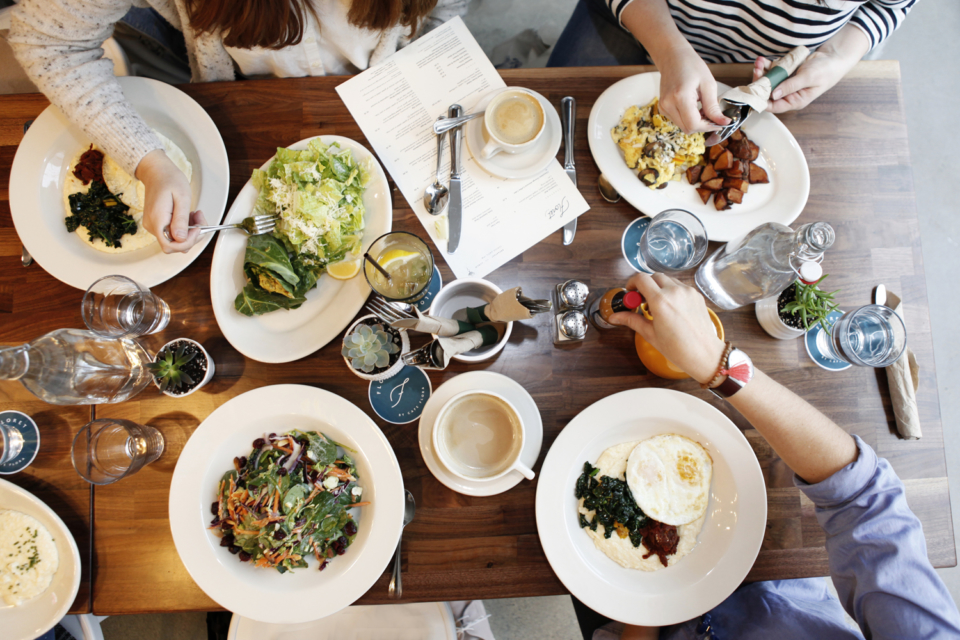
Additionally, airport patrons have varying needs at different hours of the day, which Food and Beverage (F&B) retailers must target. There are customers who want grab-and-go options in the early morning or at peak rush-hour periods, and then there are those who have long-layovers and want a full-fledged meal with a place to relax with a book, tablet, or laptop. Food and beverage establishments also get lucrative revenue from business travelers or vacationers who want to kick-off their upcoming flight with a premium libation to decompress. Furthermore, another important market segment includes growing trends among health-conscious travelers who have researched mindful dining options beforehand and are willing to go out of their way before an upcoming flight to dine at a restaurant that meets their nutritional needs.
For these reasons, Stratton-Clarke spent months working with regional farmers and local Washington purveyors to get them through airport security, after obtaining vendor credentials, to help design the optimal menu for travelers. In October, Floret held a tasting to help pick out menu items for both the grab-and-go and dine-in options and posted photos of dishes to its social media accounts to get feedback from followers.
Tastings continued through the winter. Renowned Portland, Oregon-based Stumptown Coffee Roasters is a highlight among Floret’s local vendors and the only place to enjoy it at SeaTac. In mid-December, Floret reached another big milestone by opening its winter pop-up, located directly in front of its soon-to-be-home, offering packaged snacks such as jam, chocolate, hotcakes, and, of course, fancy merchandise, just in time for the holidays.
The pop-up continued through late January, and even though spring in Seattle was still several weeks away, the live plants and greenery soon appeared in front of Floret’s future home, serving as a “green-light” (no pun intended) that the highly-anticipated opening of Floret by Cafe Flora was becoming closer to reality.
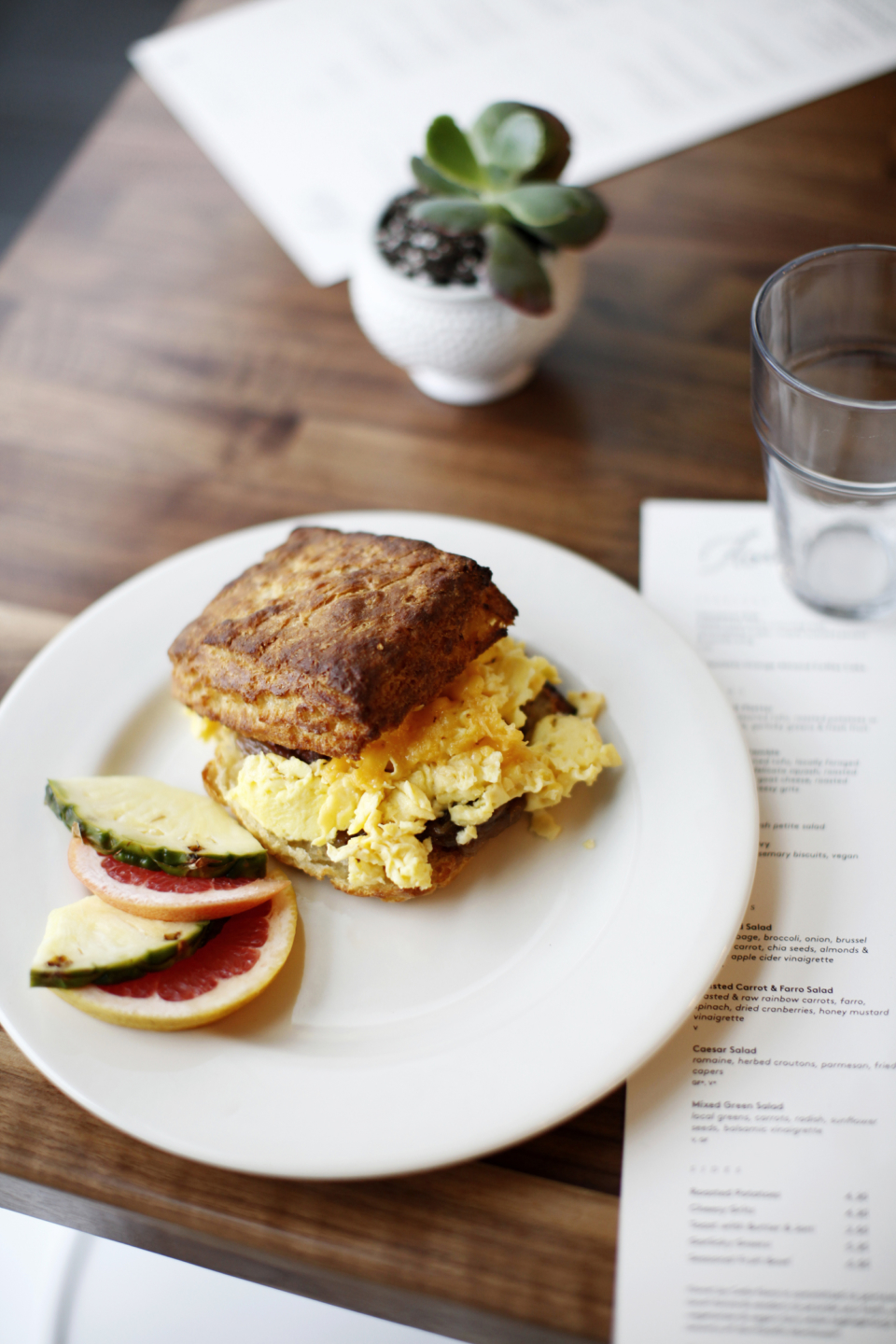
On February 6, history was made at SeaTac. The 80-seat restaurant opened to much fanfare, and the hard work that Stratton-Clarke and his team put into the project is not easily missed. The restaurant itself has 20-foot-high ceilings and large conservatory-style windows with views of the tarmac. In addition to the natural light, the interior design has also been thoughtfully procreated, with botanical wallpaper, soft color accents, and furniture made from recycled and reused materials.
The bar area features large hexagonal cement tyles, and each seat offers electrical outlets for customers to use. Patrons of the bar can sample a myriad of local alcoholic and non-alcoholic flavors. On draft, Floret offers Pfriem Family IPA and Tieton Dry-Hopped Cider, along with cans and bottles of other great local beers from Great Divide and Fremont Breweries, among others. Wine lovers can find reds, whites, and rosé, all day, from all over Oregon and Washington State, along with bubbles. Finally, there is also a reasonably-priced array of cocktails, ranging from $10.50 for a mimosa (with options to go grapefruit or rosemary lemonade) to $13.50 for the “Garden Floret,” a.k.a. Floret’s house-made bloody mary using its own mix, cucumber jalapeno-infused vodka, citrus, and pickled vegetables.
For those who prefer mocktails over cocktails, one can find Rachel’s Ginger Beer and Seattle-based Mystic Kombucha on-tap. And, it is the only SeaTac based restaurant offering Stumptown Coffee at the airport.
The grab-and-go options, which are offered from 5 A.M. to 9 P.M., feature breakfast sandwiches, housemade pastries, superfood salads, and mixed grain bowls. The dine-in offerings feature hearty sit-down breakfasts, salads, entrees, and sandwiches that are gluten-free, vegan, and vegetarian, offered from 6 A.M. to 10 P.M. All dishes feature menu items sourced from purveyors such as Local Roots in Carnation, WA, Tonnemakers in Woodinville, WA, Whistling Train Farm in Kent, WA, and Hayton Farms in Skagit Valley, WA. The full menu can be found here, and breakfast, lunch, and dinner items can be ordered at all hours of operation.
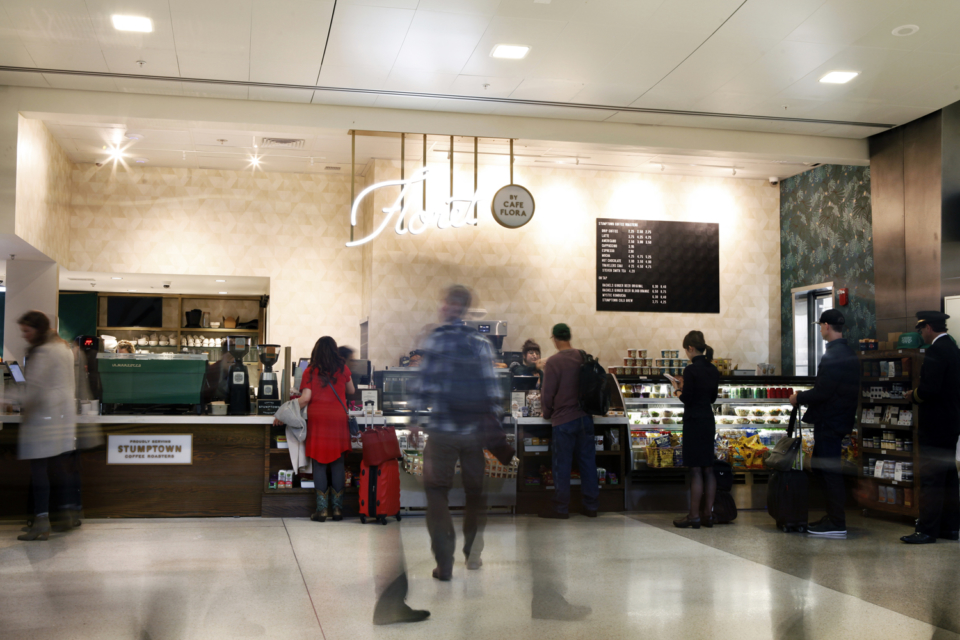
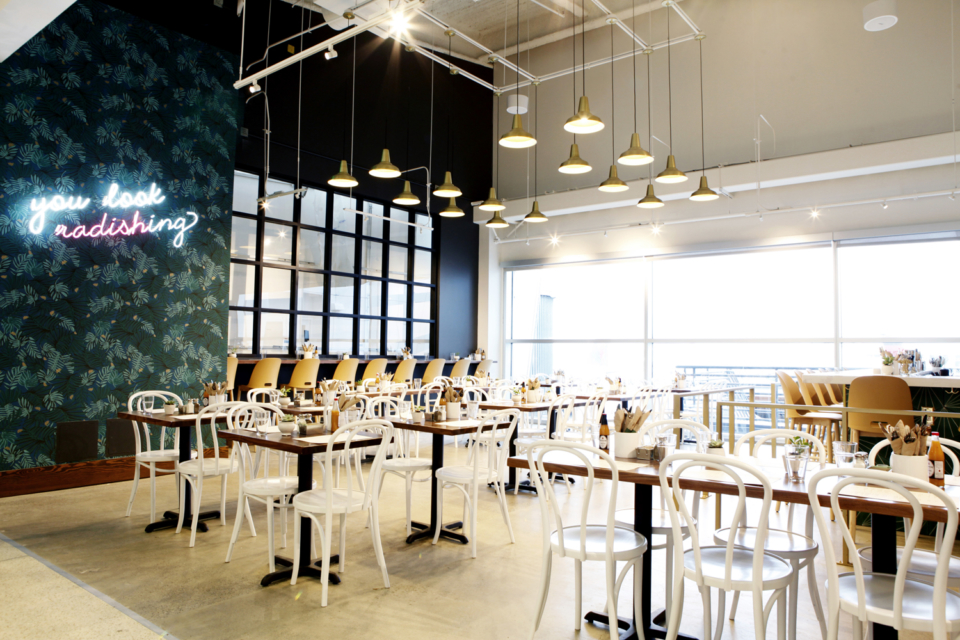
While Floret by Cafe Flora has not announced intentions to open up additional restaurants at other U.S. airports, the Seattle market is perfectly-suited to test out the concept. The menu, atmosphere, and amenities are tailored towards all dietary types for today’s modern traveler, and the hard work that Stratton-Clarke’s team has put into the project should pay dividends in no time.

